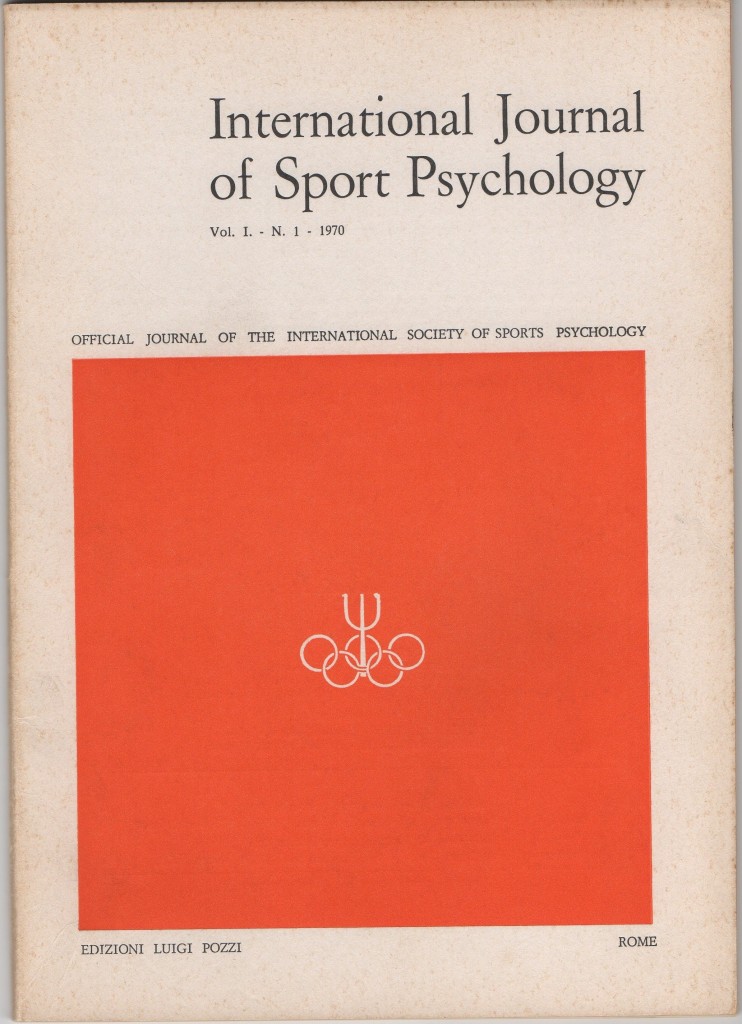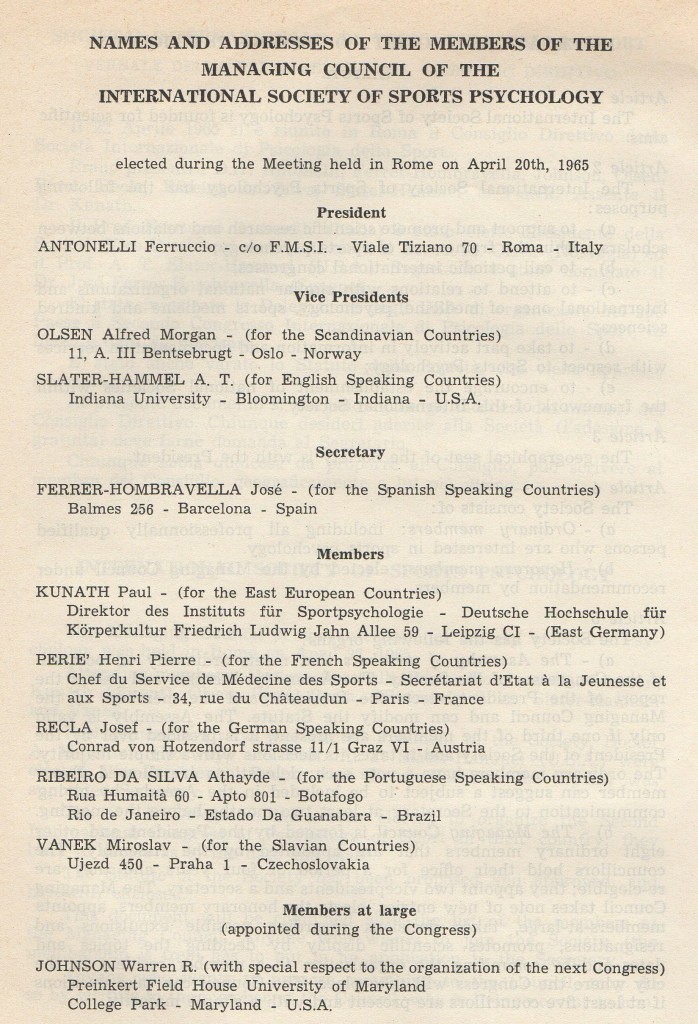This year is also the 45° Anniversary of the International Journal of Sport Psychology founded in 1970 by Ferruccio Antonelli and published since that time in Roma by Edizioni Luigi Pozzi. Below his word to explain the reason to start this challenge at that time.
This journal was the very first dedicated specifically to sport psychology, and it was created almost 10 years before the Journal of Sport Psychology that was published for the first time only in 1979.
“The Managing Council appointed an Editorial Board (led by Olsen), and I, too, signed a contract with a Norwegian publisher…and I received a good number of subscriptions. Because of the problems that Dr Olsen refers to, I have found myself obliged to take on the position of Chief Editor and to find another publisher at all costs and without delay in order to start the journal. A journal that would inform all members … had become a necessity, a duty.”(Antonelli, 1970, p.3-4).
Antonelli found the person who would accept this challenge in his friend, the publisher Luigi Pozzi. Pozzi himself told me that when Antonelli proposed this enterprise just a few words were necessary to persuade him to accept. One can only agree with Salmela (1999), when he states that this was truly an heroic challenge, achieved only thanks to Antonelli’s solitary determination, without financial coverage.
“For $10 a year I am able to offer only two small, unassuming, issues, so there is another matter which I must reveal. When registration to the ISSP was free of charge, I received 1500 applications. When I asked for 10 dollars, not for the ISSP, that sustains no expenses and thus requires no money, but for the subscription, only 10% paid this fee. I have found a very understanding publisher, who has agreed to give up all his profit, and for this I publicly thank him from the bottom of my heart; but printing and mailing expenses are enormous. I will be able to print and send out the first issue with what I have received to date. And I will send it to all 1500 members. If necessary, I will then go ahead at my own expense … this is not an exhibition of crazy heroism … I am sure that when they receive this first issue, many members will pay the subscription fee for the second issue of 1970” (Antonelli, 1970, p.4-5).









